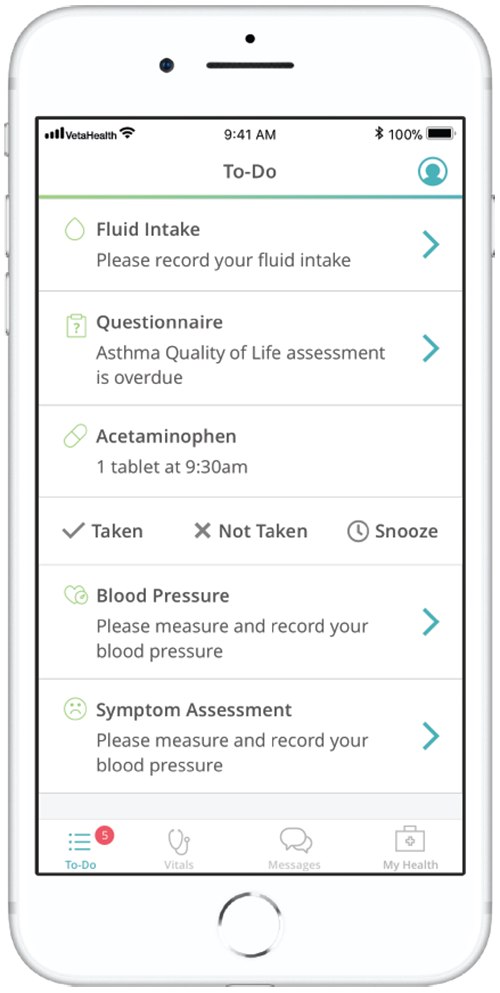The modern there’s-an-app-for-that mindset has transformed the way people interact with information. Practically every bit of information that can be managed is run through increasingly elaborate and impressively automated digital interfaces.
For a variety of reasons, healthcare is one of the arenas that can sometimes lag behind in the adoption of vibrant new digital solutions, no matter how eagerly some of the biggest tech companies might pursue the market.
Building on strong knowledge of patient and healthcare provider needs, Veta Health has developed a solution intended to thoroughly reconfigure the way continuous care and other vital medical scenarios are managed. The platform allows for remote monitoring of patients while also adhering to HIPAA protections.
To learn more, Surgical Products interviewed Nora Zetsche, MD, co-founder of Veta Health.
What can you tell us about the new digital data solution from Veta Health?
Veta Health’s digital data solution is a front-end technology platform in a tiered approach to population health management. It aims to build closer relationships between care teams and their patients outside of traditional care settings. Our platform consists of a patient-facing mobile app, a clinician team web portal, and an administrative portal for hospital administrators to gain insights into their outpatient population health efforts.
The patient app serves as an on-demand, in-pocket health pal to guide patients through their outpatient care journey. It provides informational resources, tips, reminders, and the ability to effectively track their progress through the collection of patient-generated data. In addition, the app offers a continuous communication channel to garner support from one’s care team and family members at the touch of a fingertip.
We leverage technology to enhance the trust patients place in their care providers. In turn, this trust and information source improves a given patient’s reliability in following their prescribed care plans, giving them the tools to be empowered and better self-manage their care.
What are the features of the solution on the clinician side?
The clinician team web portal utilizes the patient-generated data to extract actionable, timely insights from the patient’s ambulatory care journeys. Additional transparency is provided through the integration of electronic medical record data.
The goal of the clinician portal is to focus care on patients needing the most attention at any given time and to streamline care efforts between cross-institutional teams to ensure efficiency, all while improving outcomes. Communication tools within the platform, combined with intervention and outcome tracking and built-in escalation pathways, reduce the time and effort required for effective outpatient population health measures.
How will this strengthen communication between healthcare professionals managing patients’ recovery processes?
Prior to founding Veta Health, I experienced communication challenges in healthcare practice as a radiologist. An example of this in my past life were mammograms, as these were always a test of patience for the radiology practice staff. Not because of the imaging itself, but all of the coordination surrounding these tests.
The first step was to get our hands on any prior imaging. The administrative staff would head straight to the phone, armed with a sticky note that had three potential names listed of the hospitals or doctor’s offices that could possibly have some images in their archives. Just try remembering the name and location of any clinical facility you went to over five years ago off the top of your head.
Many calls and coordination over fax and phone later, the imaging finally arrived – a full two days after the patient had been in the facility for imaging. All too often, the previous images obtained showed a potential density in a quadrant we didn’t have an optimal angle on in our newest imaging, so we’d need to call the patient back for a second round.

(Image credit: Veta Health)
You can also imagine how many inbound calls requesting reports or images were fielded on a daily basis, simultaneously. This incurred significant administrative time and cost, and, worst of all, hassle. And it often meant another round of harmful radiation for the patient.
On the Veta Health platform, part of our mission is to solve this pain point. Clinical teams have the patient’s longitudinal care journey available on demand. Past hospital visits, diagnoses, etc. are easily accessible through the integrated electronic medical record information. Previously performed care team interventions, care plan modifications, and ongoing information on the patients’ health status are updated in real-time and viewable by all care team members that touch the patient at specific times. Auto-populated task lists and escalation pathways ensure ownership and governance while streamlining care coordination between care team members.
What is the learning curve like with the new solution?
As the industry finds itself in a period of transformation, we encounter the full spectrum of maturity levels when it comes to readiness in care management and population health initiatives. In addition to our technology, Veta Health offers consultancy services that facilitate initial roll-out of the platform to ensure clinician teams and systems feel supported in transition and workflow integration.
We spend time shadowing our partners’ facilities to familiarize ourselves with existing workflows and technologies to integrate thoughtfully into practices. Next, we work with our partners to clearly define the proposed roll-out from a workflow and resource planning perspective, fully understanding success metrics and goals for all parties. Lastly, we offer to provide our own patient success coordinators that support the initial period for both patients and clinicians.
Hands-on training on use of the clinician portal takes less than a week of dedicated staff time. The patient mobile app has all guides and usability best-practices built in and can be deployed without additional training. As a digital solution company with a front-end platform offering, all of our development activity has user experience at its core.
How do you see this solution helping healthcare facilities as they transition to new models of care?
The healthcare industry is currently in transformation. The definition of a care settings such as hospitals and doctors’ offices is changing as technology has extended the reach of care delivery well beyond the four walls of a clinical building. In addition, government regulation has put greater responsibility on care providers to provide and prove quality over quantity of care in the longitudinal care journey. Lastly, the consumers — the patients — are experiencing huge improvements in access and data transparency in other industries.
We can already order ride services through our phone. Next up, we can call our own or a shared car to drive autonomously to come pick us up while checking the fuel or battery efficiency stats in the car’s app. Patients are being seen as consumers of their health and are demanding the same levels of innovation of the traditionally innovation-averse health industry as of other industries. Healthcare facilities need to proactively address these trends. At Veta Health, we see ourselves as agents of this change.
Leveraging our platform, care providers gain the necessary transparency into the patients’ longitudinal care journey to track and consequently improve the quality of any existing population health and care management measures. I’m a firm believer of the fact that health outcomes can only be improved through a collaborative care delivery model that pulls the patient into the fold of their care management.
With the Veta Health app, patients are given a seat at the table. They receive actionable information on their care journey that not only deepens their level of understanding of oftentimes complex concepts, but, more importantly, motivates them to actively participate.
This is the kind of empowerment patients are demanding in today’s world and by fulfilling this demand, healthcare facilities have the ability to form lasting relationships of trust, reliability, and loyalty with their patient populations.




